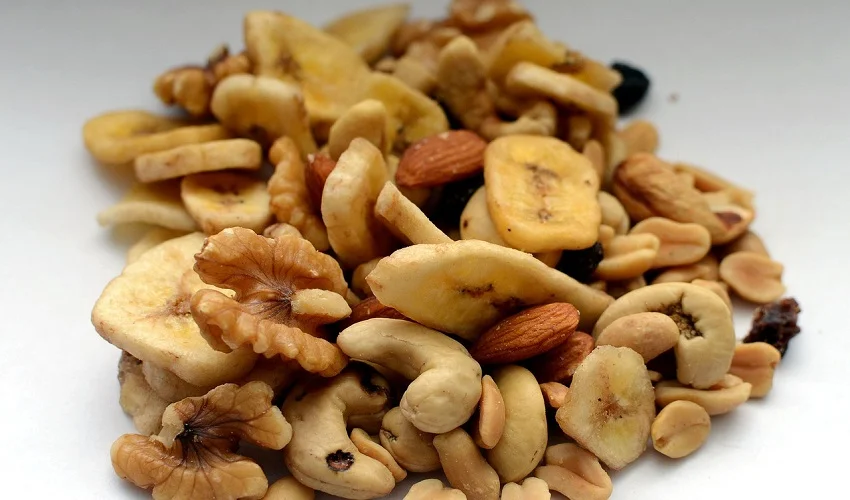Introduction to milk in diabetic diets
Milk is a popular and widely consumed beverage that is rich in essential nutrients such as calcium, protein, and vitamins. However, for individuals with diabetes, the inclusion of milk in their diet requires careful consideration. While milk can be a valuable source of nutrients, it also contains lactose, a type of sugar that can affect blood sugar levels. Therefore, it is important for individuals with diabetes to monitor their milk intake and choose low-fat or fat-free options. Additionally, consulting with a healthcare professional or registered dietitian can provide personalized guidance on incorporating milk into a diabetic diet.
Benefits of including milk in diabetic diets
Including milk in diabetic diets can have several benefits. Milk is a good source of calcium, which is essential for maintaining strong bones and teeth. It also contains protein, which helps in building and repairing tissues. Additionally, milk is a low glycemic index food, which means it does not cause a rapid spike in blood sugar levels. This makes it a suitable choice for individuals with diabetes. Moreover, milk is rich in vitamins and minerals, such as vitamin D and potassium, which are important for overall health. However, it is important to choose low-fat or skim milk options to avoid consuming excessive saturated fats. Overall, incorporating milk into diabetic diets can provide valuable nutrients without significantly impacting blood sugar levels.
Considerations for including milk in diabetic diets
When considering including milk in diabetic diets, there are a few important factors to keep in mind. First, it’s essential to choose low-fat or fat-free milk options to minimize the intake of saturated fats. Additionally, individuals with diabetes should monitor their blood sugar levels closely after consuming milk, as it contains lactose, a natural sugar. It may be necessary to adjust insulin or medication doses accordingly. Lastly, portion control is crucial when incorporating milk into a diabetic diet. Moderation is key to ensure a balanced and healthy meal plan. By considering these factors, individuals with diabetes can safely include milk as part of their dietary routine.
Types of Milk
Cow’s milk
Cow’s milk is a common dairy product that is widely consumed around the world. It is rich in essential nutrients such as calcium, protein, and vitamin D. However, for individuals with diabetes, it is important to consider the impact of cow’s milk on blood sugar levels. Cow’s milk contains lactose, a type of sugar that can raise blood glucose levels. Therefore, it is recommended for individuals with diabetes to consume cow’s milk in moderation and to opt for low-fat or skimmed milk options. Additionally, it is advisable to monitor blood sugar levels after consuming cow’s milk to ensure that it is well-tolerated.
Almond milk
Almond milk is a popular alternative to dairy milk, especially for those who are lactose intolerant or follow a vegan diet. It is made from ground almonds and water, resulting in a creamy and nutty flavor. Almond milk is low in calories and carbohydrates, making it a suitable choice for individuals with diabetes. Additionally, it is rich in vitamin E, calcium, and healthy fats, which can provide various health benefits. However, it is important to choose unsweetened almond milk to avoid added sugars that can affect blood sugar levels. Overall, almond milk can be a nutritious and delicious addition to a diabetic diet.
Soy milk
Soy milk is a popular alternative to cow’s milk, especially for those who are lactose intolerant or follow a vegan diet. It is made from soybeans and has a creamy texture and a slightly sweet taste. Soy milk is also a great option for individuals with diabetes as it has a low glycemic index, meaning it does not cause a rapid increase in blood sugar levels. Additionally, soy milk is rich in protein, vitamins, and minerals, making it a nutritious choice for people with diabetes. It can be enjoyed on its own, used in cooking and baking, or added to coffee and smoothies.
Nutritional Value of Milk
Macronutrients in milk
Milk is a rich source of macronutrients, providing a balanced combination of carbohydrates, proteins, and fats. Carbohydrates in milk primarily come in the form of lactose, a natural sugar found in dairy products. Proteins in milk, such as casein and whey, are essential for muscle growth and repair. The fat content in milk varies depending on the type, with whole milk containing higher levels of fat compared to skim or low-fat milk. Overall, incorporating milk into a diabetic diet can provide essential macronutrients while being mindful of portion sizes and choosing lower-fat options.
Micronutrients in milk
Milk is not only a great source of macronutrients like protein and carbohydrates, but it also contains a wide range of essential micronutrients. These micronutrients play a crucial role in maintaining overall health and well-being. Milk is particularly rich in calcium, which is essential for strong bones and teeth. It also provides important vitamins such as vitamin D, vitamin B12, and vitamin A. Additionally, milk is a good source of minerals like potassium and phosphorus. Including milk in a diabetic diet can be beneficial as it provides a balanced mix of nutrients that support various bodily functions.
Calcium content in milk
Calcium is an essential mineral that plays a crucial role in maintaining healthy bones and teeth. Milk is an excellent source of calcium, making it a popular choice for individuals looking to increase their calcium intake. In diabetic diets, it is important to carefully monitor the amount of carbohydrates consumed, as they can affect blood sugar levels. However, milk is a low-carbohydrate beverage that provides a significant amount of calcium without causing a spike in blood sugar. This makes it a suitable option for individuals with diabetes who are looking to incorporate calcium-rich foods into their diet. Additionally, milk contains other important nutrients such as vitamin D, which aids in the absorption of calcium. Including milk in a diabetic diet can help promote bone health and support overall well-being.
Effects of Milk on Blood Sugar Levels
Impact of milk on glycemic index
Milk plays a significant role in the glycemic index of diabetic diets. The glycemic index measures how quickly carbohydrates in food raise blood sugar levels. Milk has a relatively low glycemic index, meaning it does not cause a rapid spike in blood sugar levels. This is beneficial for individuals with diabetes as it helps to maintain stable blood sugar levels. Additionally, milk contains essential nutrients such as calcium, vitamin D, and protein, which are important for overall health. However, it is important to note that different types of milk, such as whole milk or flavored milk, may have varying glycemic index values, so it is advisable to consult with a healthcare professional or a registered dietitian for personalized dietary recommendations.
Effects of lactose on blood sugar
Lactose, the natural sugar found in milk, can have varying effects on blood sugar levels in individuals with diabetes. While some people with diabetes may be able to tolerate moderate amounts of lactose without experiencing significant changes in their blood sugar, others may need to limit their intake or opt for lactose-free milk alternatives. It is important for individuals with diabetes to monitor their blood sugar levels closely and work with a healthcare professional to determine the appropriate amount of lactose-containing dairy products to include in their diet. Additionally, it is worth noting that different dairy products may have different effects on blood sugar, so it is important to consider the overall composition of the food and the individual’s specific response to lactose.
Role of protein in milk on blood sugar levels
Protein plays a crucial role in milk when it comes to blood sugar levels. The protein in milk is slow to digest, which means it doesn’t cause a rapid spike in blood sugar levels. Instead, it provides a slow and steady release of energy, helping to maintain stable blood sugar levels throughout the day. This is particularly beneficial for individuals with diabetes, as it helps prevent sudden spikes and crashes in blood sugar. Additionally, the protein in milk can also contribute to feelings of fullness and satiety, which can aid in weight management and overall blood sugar control. Therefore, incorporating milk into a diabetic diet can be a smart choice for those looking to maintain stable blood sugar levels and manage their condition effectively.
Incorporating Milk in Diabetic Meal Plans
Portion control and serving sizes
Portion control and serving sizes play a crucial role in managing diabetes. When it comes to incorporating milk into a diabetic diet, it is important to be mindful of the quantity consumed. While milk is a nutritious beverage that provides essential nutrients like calcium and vitamin D, it also contains carbohydrates that can affect blood sugar levels. Therefore, it is recommended to opt for low-fat or skim milk options and consume it in moderation. Additionally, consulting with a healthcare professional or a registered dietitian can help determine the appropriate portion size of milk based on individual dietary needs and blood sugar control goals.
Choosing low-fat or non-fat milk options
When it comes to choosing milk options for diabetic diets, it is important to consider low-fat or non-fat options. These types of milk have a lower fat content, which can help regulate blood sugar levels. Additionally, they are also lower in calories compared to full-fat milk. Low-fat and non-fat milk options provide essential nutrients like calcium, vitamin D, and protein without the added fat. It is important to read the labels and choose milk that is unsweetened and does not contain added sugars. Incorporating low-fat or non-fat milk into a diabetic diet can be a beneficial way to enjoy the benefits of milk while managing blood sugar levels effectively.
Combining milk with other diabetic-friendly foods
When it comes to combining milk with other diabetic-friendly foods, there are several options to consider. One option is to add milk to a bowl of whole grain cereal, such as oats or bran flakes. This combination provides a good balance of carbohydrates, protein, and fiber, which can help regulate blood sugar levels. Another option is to blend milk with fruits, such as berries or bananas, to create a nutritious and delicious smoothie. Additionally, milk can be used as a base for diabetic-friendly desserts, such as chia seed pudding or low-sugar ice cream. By combining milk with other diabetic-friendly foods, individuals with diabetes can enjoy a variety of tasty and nutritious options while managing their blood sugar levels.
Summary of the benefits of including milk in diabetic diets
Including milk in diabetic diets can have several benefits. Milk is a good source of calcium, which is essential for maintaining strong bones and teeth. It also contains protein, which helps in building and repairing tissues. Additionally, milk is low in glycemic index, meaning it has a minimal impact on blood sugar levels. This makes it a suitable option for individuals with diabetes. Moreover, milk contains vitamins and minerals that contribute to overall health and well-being. However, it is important to choose low-fat or skim milk options to avoid excessive intake of saturated fats. Overall, incorporating milk into a diabetic diet can provide essential nutrients and contribute to better blood sugar management.
Importance of moderation and individualized meal planning
When it comes to diabetic diets, moderation and individualized meal planning are of utmost importance. This is especially true when considering the inclusion of milk in the diet. While milk is a nutritious beverage that provides essential nutrients like calcium and vitamin D, it also contains carbohydrates in the form of lactose. For individuals with diabetes, it is crucial to monitor their carbohydrate intake to manage blood sugar levels effectively. Therefore, incorporating milk into a diabetic diet should be done in moderation and as part of a well-balanced meal plan tailored to individual needs and preferences. Consulting with a registered dietitian can help in creating a personalized meal plan that takes into account the specific dietary requirements and goals of individuals with diabetes.
Final thoughts on incorporating milk in diabetic diets
In conclusion, incorporating milk into diabetic diets can be beneficial if consumed in moderation and as part of a balanced meal plan. Milk is a good source of protein, vitamins, and minerals, which are important for overall health. However, it is important to choose low-fat or skim milk options to avoid excessive intake of saturated fats. Additionally, individuals with diabetes should monitor their blood sugar levels and work with a healthcare professional to determine the appropriate amount of milk to include in their diet. Overall, milk can be a nutritious addition to a diabetic diet when consumed mindfully and in moderation.




